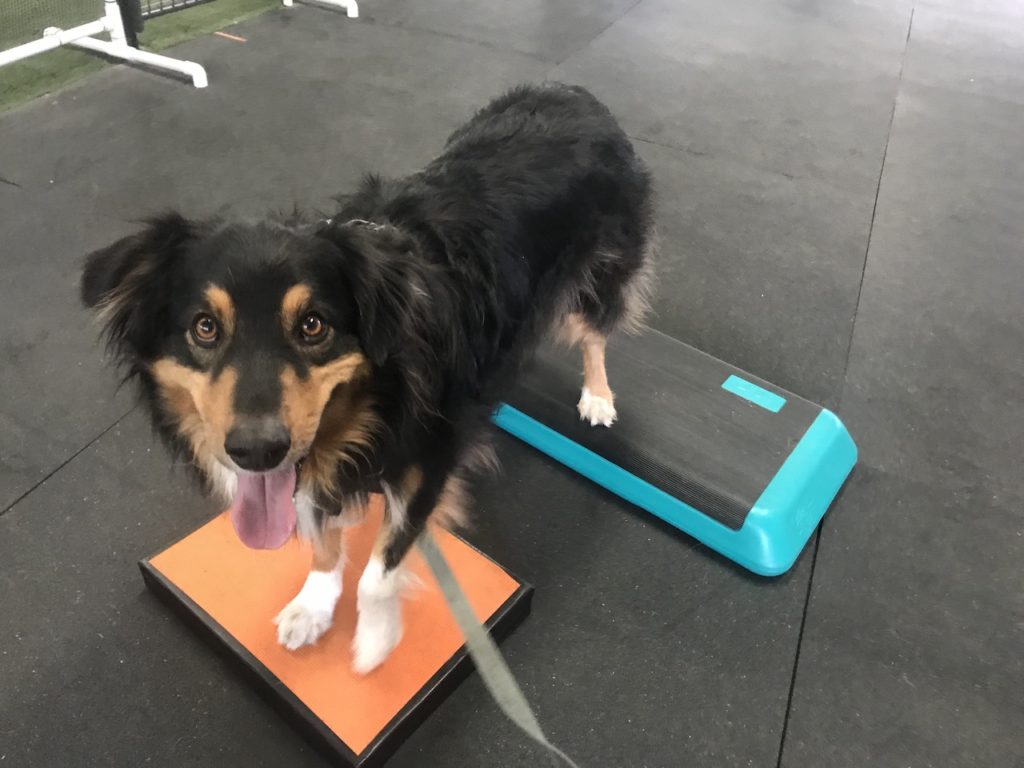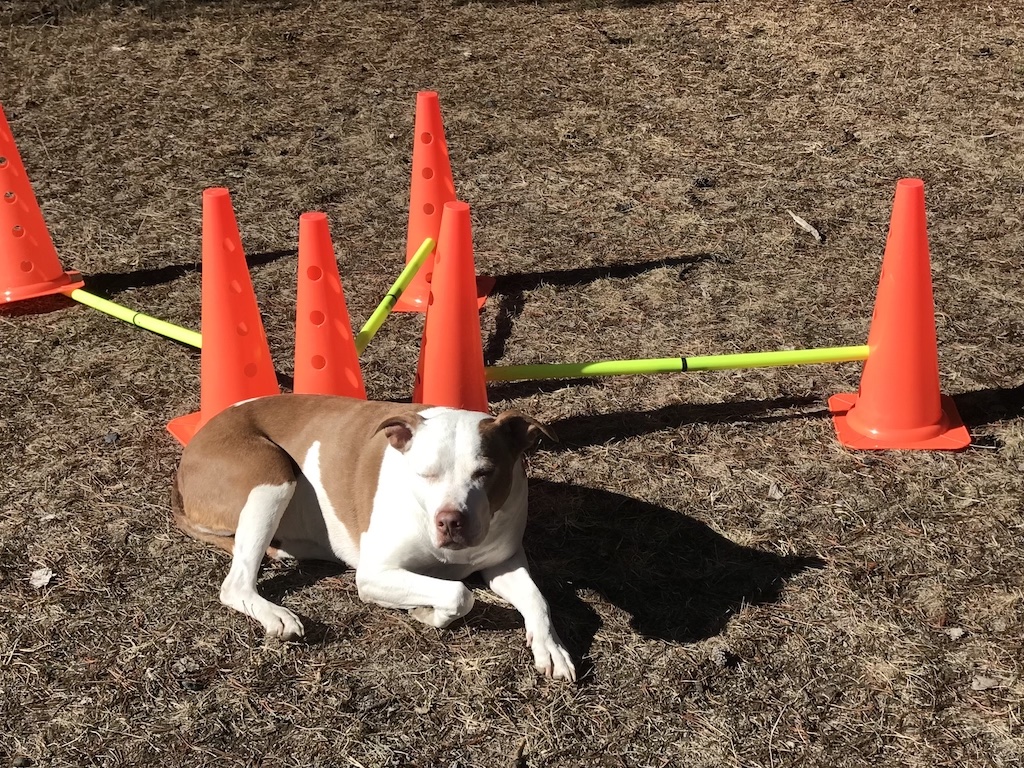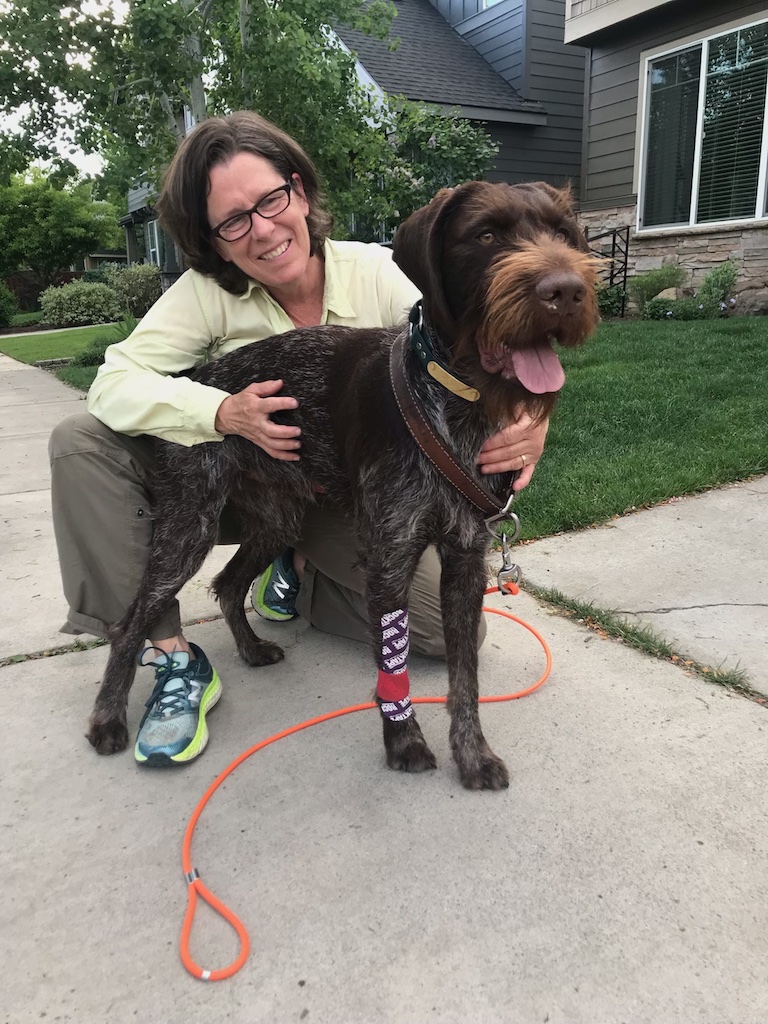
I had no clue about canine physical therapy until my dog couldn’t walk. Last summer, my 93 pound dog rescue mutt, Alaska, collapsed with a shriek as she was chasing her newly adopted baby brother Smoky Joe. She would then limp on and off, and we could tell she was in a lot pain and was trying hard not to show it.
Two different opinions from local vets later, we discovered she had a torn Iliopsoas muscle that was causing her so much pain that she couldn’t walk properly.
Our second vet recommended Heidi, a mobile canine physical therapist who was open to coming to our RV for therapy sessions with Alaska. After 6 months of rest and weekly physical therapy, Alaska recovered from her muscle tear and is doing well, although there’s always a risk for re-injury.
With over 25 years under her belt as a human physical therapist, Heidi recently started a small business specializing in canine physical therapy- Cozier Canine Rehabilitation. In the state of Oregon, it’s important to note that dog companions need a veterinary referral to hire a canine physical therapist. This means Heidi works with both the vet and the dog companion to come up with the best recovery plan for their injury.
Ever since Heidi has helped us in Alaska’s recovery, I’ve been wanting to sit down with her to talk about her specialty.
What does a canine physical therapist do?
As a canine physical therapist, I help to restore your dog’s functional mobility. I work with canine’s that have neurologic diseases, orthopedic injuries and chronic pain from arthritis and degenerative joint disease. I spend the time talking with you about your dog – because you know your dog better than I do. I want to talk about your expectations. I want to include the owner in the plan of care.
What are the benefits of canine physical therapy?
When I go to a client, I talk to the owner, and we establish goals so we’re all on the same page. And then we discuss how to get there. We will get there by completing an evaluation that goes over their issues. Most goals for owners include improving mobility and getting pain in control. Sometimes my clients can’t afford expensive surgeries, so I work with the veterinarian to provide the best care possible.
What are the risks of canine physical therapy?
Physical therapy for your dog is considered to be very safe unless performed improperly. If physical therapy is not administered correctly you may see no improvement or even worsening of your dog’s condition. It is very important that when seeking a canine physical therapist that they are a board certified Physical Therapist as well as a Certified Canine Rehabilitation Therapist.
What are the common injuries you see in dogs?
There are orthopedic injuries that can occur in the front limbs of your dog at the carpus (wrist), elbow and shoulder as well as in the hind limbs at the hock (ankle), knee (stifle) and hip.
Some common injuries that I have seen and treated on the front limbs include:
- Medial shoulder instability
- Biceps and supraspinatus tendinopathy
- Teres major strain and carpal strain
- Fragmented coronoid process (FCP) at the elbow
I’ve also worked with owner’s when their companions have undergone knee (stifle) surgeries such as:
- TPLO (Tibial Plateau Leveling Osteotomy)
- TTA (Tibial Tuberosity Advancement)
- Post operative hip surgeries such as FHO (Femoral Head Osteotomy)
Strains and sprains at any joint or muscle can occur at all ages. I’ve had great successes rehabbing iliopsoas strains- just ask Alaska!
I always assess the spine, which is an integral part of the canine. I’ve worked with owner’s and their canine’s who have been diagnosed with intervertebral disc disease, degenerative myelopathy, spondylosis and lumbosacral stenosis.
What are some things dog companions can do to prevent injuries?
A full musculoskeletal evaluation is important to assess any weakness in the limbs, spine and abdominals, or areas of tightness and postural deficits.
I also like to see the dog walk (gait assessment) at varying speeds, as they are able, and observe their head position, stride and cadence.
In my dog Arthur’s case, because he’s a McNab with uncontrolled quick movements when catching the frisbee while airborne, I need to make sure he has good awareness of his rear end and back legs.
We work on trunk, limb and core strength as well as balance. Arthur and I do plyometric training but we are very careful and aware that this type of training requires rest breaks. It’s important to know when to work your dog and when to give them a break.
What kinds of dogs do you see the most injuries?
It depends on the dog. It can be an athletic dog in agility training that injures their hip muscle, or it can be a working dog that injures their back, or it can be a dog who captures a frisbee and injures their knee.
I see senior dogs who have weakness, difficulty walking and getting up, laying down or sitting.
What are some signs that your dog could need physical therapy?
- When you’re walking your dog and you see them not taking as big of a step on a certain side
- When you notice your dog’s head is hanging a bit lower than usual during walks
- When your dog’s not wanting to walk or trot, looks at you and sits down
- When the dog is sitting off to a certain side
- When your dog’s tail isn’t wagging on both sides equally
- When your dog’s standing with a wider stance
- When your dog takes several seconds to lay down because they are uncomfortable
- When your dog is pacing or demonstrating signs of pain such as panting
- When your dog is experiencing a decrease in appetite or play
Why are you mobile?
I have found after doing this for so many years that working with your canine in their home environment is not only more relaxing for them but also provides me firsthand knowledge about how they manage in their home. I can then provide practical advice to you on how to accommodate the environment to your companions. I can also customize home exercise programs that can be done in their home surroundings.
What are some tools you use during your physical therapy sessions?
- Customized individual home exercise programs that are tailored for your dog
- Hands on practices like stretching, range of motion, and manual therapy
- Modalities including: Laser, neuromuscular electrical stimulation (NMES) and transcutaneous electrical nerve stimulation (TENS)

What should I know about canine physical therapy?
There is no cookbook answer for treating your canine. They are all very individual, fluid and dynamic. It’s important to not just focus on the problem, but to assess the whole dog. Everything is connected.
For example, when a dog has postural issues, I ask: “where are those postural issues coming from?” Hip, spine or knee? Or somewhere else? So it’s important to assess the dog’s entire body as a whole.
What’s your favorite part about being a canine physical therapist?
My favorite part is when that dog greets me at the door.
I love that I can help the owner help their dog, because they really want to help their dog to become stronger and be in less pain.
I love being a part of the healing process for dogs and their humans. Whether the dog is old or young, the healing journey is always so satisfying.


